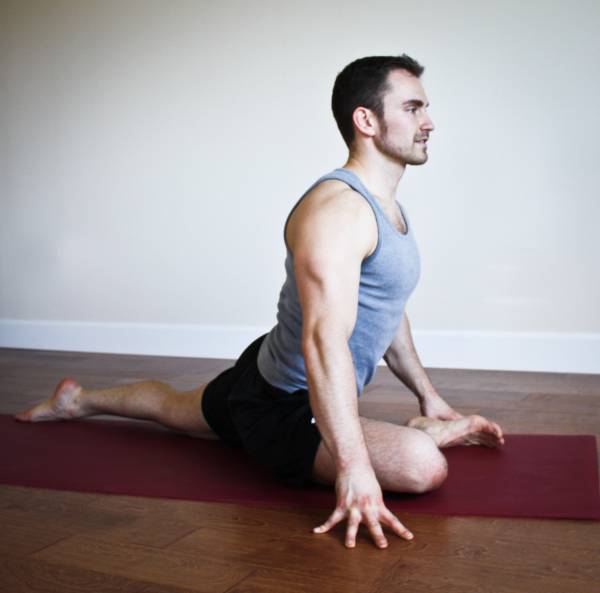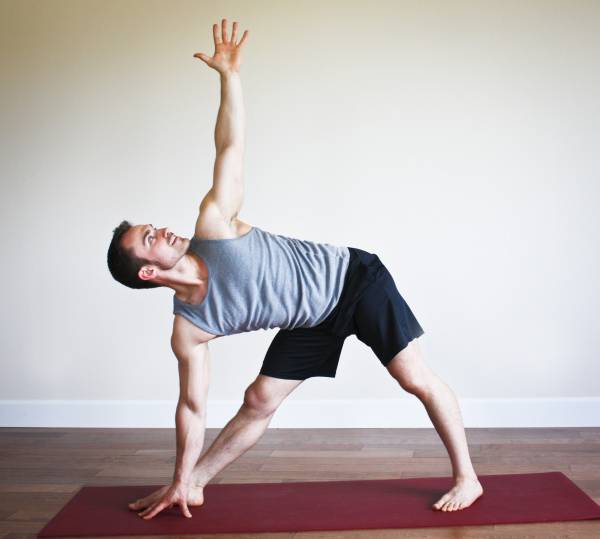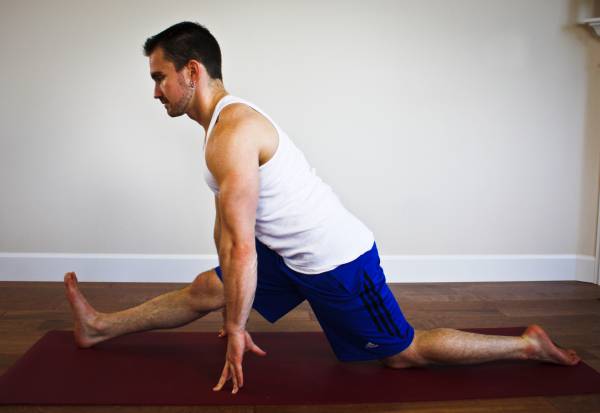The brain’s natural impulse when it feels a stretch is to say, “Stop! This could get hurt!” Beyond sheer physical limitation in any stretch, this neurological response that makes your muscles tighten up can prevent you from achieving full benefits. There are a few ways to overcome this response, and facilitated stretching is one of the most straightforward.
Facilitating stretching involves flexing or engaging a muscle group at the same time you are stretching it. Typically, a muscle being stretched – the antagonist muscle group – is not working. Instead, the muscle group responsible for the exact opposite function in the body – the agonist muscle group – is working. Consider this example: In a seated forward fold, your hamstring muscle group is the antagonist, limiting the pose and receiving the stretch. Your quadriceps and core are agonist muscle groups, working to flex your hips. Your brain understands this and works to keep the hamstrings from overstretching by tensing them up.
Here is where you can step in and trick your brain. By flexing or engaging the muscle being stretched, the antagonist muscle group now appears to be an agonist muscle group to your brain. It stops working to prevent the stretch, allowing you to more fully experience the stretch. This does not necessarily mean you will bend further forward to go into the stretch more. But, if you try it on your own, you will certainly feel the stretch more, and that is what matters. As an additional benefit, by engaging the antagonist muscle, you draw the stretch into the belly of the muscle and away from the tendon. Tendons are less able to stretch and more likely to tear, so drawing the stretch to the belly of the muscle protects you from overstretching and injury.
Try these examples of facilitated stretches:



Any time you are in a yoga class, try to facilitate your stretches by keeping all of your muscles engaged. The only class in which we advocate passive static stretching, a stretching method where the body is completely relaxed, is in yin yoga. Yin yoga is designed to open up connective tissue in the body that cannot be targeted while muscles are engaged, but yin is done in a very specific way with the use of props and proper sequencing.
All other yoga classes assume you will be engaging your muscles throughout the class, and most teachers will attempt to cue this as you move through the sequence. By using facilitated stretching, you will receive the benefits of every stretch without risking injury while simultaneously building body awareness.
Photo 1 courtesy ofShutterstock.
Photos 2, 3, & 4 courtesy ofBrandon Hoferand Breaking Muscle.






